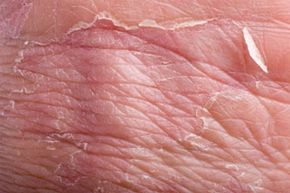Staph bacteria normally live on your skin and in your nose without causing problems. However, skin damage, surgery or an injury may allow the bacteria to overcome the body's natural protective mechanisms and cause infection. Skin infections -- such as impetigo or cellulitis -- are the most common type of infection caused by staph, or Staphylococcus aureus [source: Stöppler]. But in rare cases, scalded skin syndrome, a serious condition that makes skin appear burned, can develop in newborns and young children [source: Dhar].
Being a new parent is stressful enough without seeing what appear to be burns all over your child's body. To make matters worse, scalded skin syndrome can be life-threatening, so immediate treatment is necessary. While the majority of scalded skin syndrome cases are seen in children under the age of six, infections can also occur in adults with renal failure or immune deficiency disorders [source: Dhar].
Advertisement
Proper diagnosis of scalded skin syndrome can be difficult -- the disease's symptoms can resemble other skin conditions -- and a misdiagnosis could be fatal. Typically, a doctor will use a biopsy and a bacterial culture to identify the condition [source: Children's Hospital Boston]. As always, the best thing you can do is educate yourself. Knowing the symptoms and the proper treatments for staphylococcal scalded skin syndrome will help you be prepared in the event that you or your child is ever infected.
Keep reading to find out exactly what causes the infection.
Advertisement
